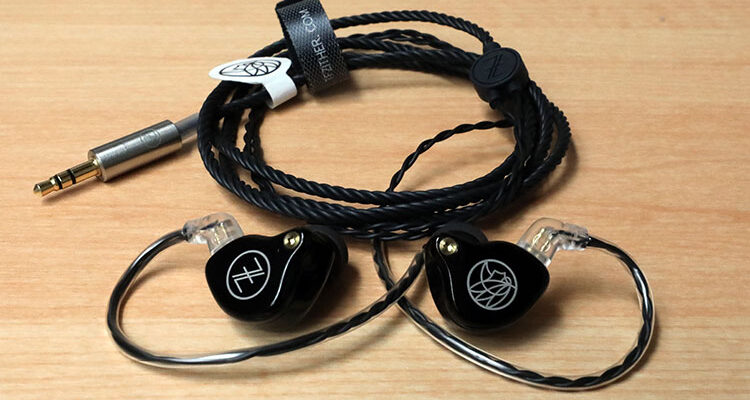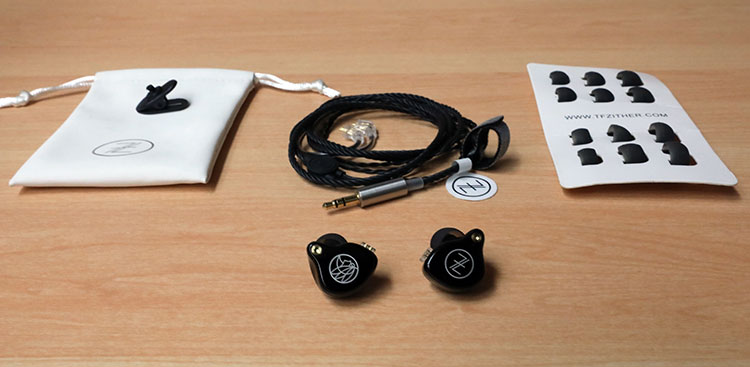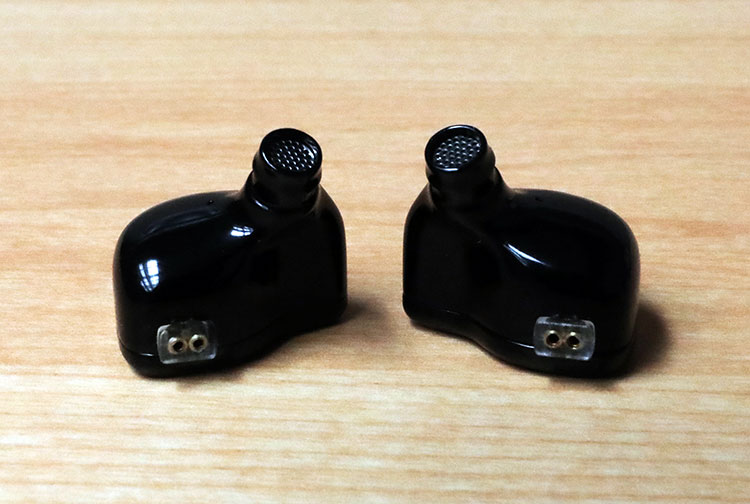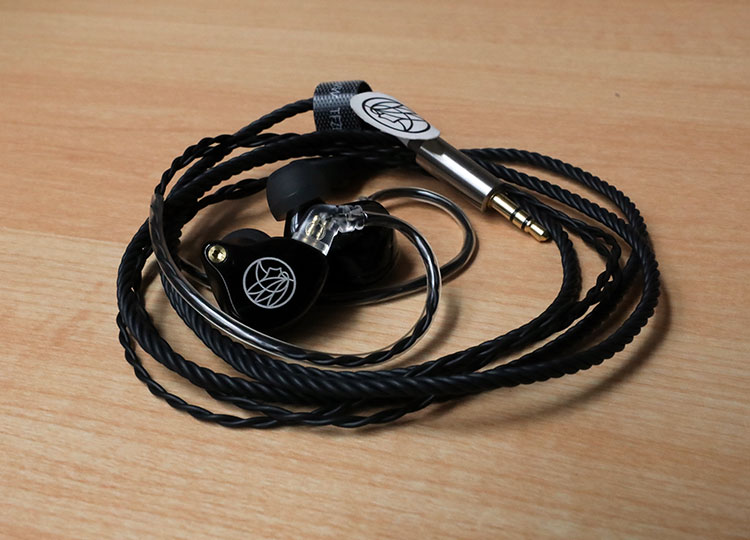The TFZ T2 Galaxy is a 12mm single dynamic driver universal IEM designed to appeal to those looking for their first upgrade without breaking the bank at $59.
Disclaimer: The Fragrant Zither (TFZ) T2 Galaxy sent to us is a sample in exchange for our honest opinion. We thank the team at TFZ for giving us this opportunity.
This is our first TFZ product reviewed on Headfonics but you can study alternate sub-$100 options by clicking here.
TFZ is a company based in Shenzhen, China which entered the audio industry in 2015. While they may be a relatively young company, they have been flooding the market with IEM models that primarily cater to the audio enthusiasts on a budget.
Since then, the company saw the expansion of its market from Asia to Europe and America with the release of budget-friendly IEMs that are anchored on the various iterations of the graphene driver technology.
While they have already delved into the balanced armature drivers through their Secret Garden series, they have focused more on the development of great sound quality out of the graphene-driver technology. TFZ caught the public hype when they released their TFZ Series. They then followed it up with the release of the Exclusive series, My Love II, Tequila, the Queen and the King series.
I personally owned the TFZ Series 2 and with a $45 price tag, it’s hype was well-deserved as it captivated casual listeners and budding audiophiles alike. With just a little mark up in its price at $59 on the TFZ T2 Galaxy, it’d be interesting to know if it has managed to ride the hype built by its predecessor.
Company Pitch
The T2 Galaxy, as TFZ claims, is built around its Series 4 model with more resolution and more emphasis on female vocal presentation. It’s also an upgrade to the T1 Galaxy as the T2 boasts more body and resolution across the frequency range.
Package & Accessories
For a sub-$60 IEM, you wouldn’t really expect much from the packaging. The unboxing experience is pretty much basic. You can already see the IEM in the upper part of its rectangular box while the rest of the accessories are placed inside a separate box below the IEM. There you’ll find the cables, a set of wide-bore and narrow bore tips of assorted sizes (S, M, L) as well as a white pleather pouch and a cloth clip. You’ll also get a leaflet providing the specifications of the T2 Galaxy and some other TFZ models.
Build Quality
The unit sent to me was an all-black version but you may find other colorways at tfzither.com. T2 Galaxy’s faceplate is made out of stainless steel carved through a CNC Machine. The faceplate is adorned with different logos on each side. The shell, meanwhile, utilizes polycarbonate materials. On the nozzles, they’ve put in metal grills which would serve as earwax guard and perhaps to dampen the sound a bit.
Cable & Connectors
All of TFZ’ models have utilized the 0.78mm two-pin configuration and it’s basically the same with the T2 Galaxy. The cable is a twisted four-core silver-plated oxygen-free copper (OFC) wrapped in plastic while the female connector is housed in plastic which protrudes from the surface of the shell. Microphonics is not an issue on its cables as I have used it when I’m out and about and so far I haven’t heard any noise coming from the cables whenever it rubs against my shirt.
Perhaps the downside that I have with the TFZ’s connectors is it easily comes loose. I have had the Series 2 before and it’s two-pin became loose right after I tried cable rolling. I haven’t tried some cable rolling on the T2 Galaxy but judging by how its other models have been notorious for having a loose connection on the two-pin and how the T2 Galaxy’s female connectors are built similarly to its predecessors, I guess I may have to pass up on changing its stock cable.
Comfort & Fit
With a good angle on its nozzle and a right curve in the inner part of the shell, the T2 Galaxy sits flush on my ears and in turn, provides good comfort and seal. The medium size wide bore tips that were pre-installed on the IEM already provided decent isolation and there was no need to adjust the placement of the IEM from time to time whenever I’m out and about.
As aforementioned, there are two set of tips namely the narrow bore and the wide bore. While I find both to have the fit and seal, there are differences in the sound as the narrow bore added a little punch and smoothened out the highs a bit while the wide bore had added air up top as well as a wider stage.
Sound Impressions
Tonality & Presentation
The T2 Galaxy has a mild V-Shaped sound with more emphasis in its bass and treble. Its highs, while having good extension, has an artificial timbre to it with the coloration running obvious in its presence and brilliance regions.
It definitely belts out that lingering dynamic driver bass yet it doesn’t give you that well-refined details from the BA drivers. The presentation on male vocals may sound a little thin and a bit recessed but it remains true to its pitch as it allows vocals and instruments on higher octaves to shine. The uptick in its upper mids and treble, meanwhile, gives a perceived increase in detail retrieval making it easily one of the better choices in its price range.
Staging
Overall, the soundstage on the T2 Galaxy has decent depth and height. Width, however, may sound intimate as a result of the sudden dip in the lower mids particularly between 250 Hz to 800 Hz. High pitched notes would offer a more intimate presentation on the T2 Galaxy whereas low pitched instruments and vocals would slightly take a backseat.
Notes would also have relatively good separation and accurate placement while there would be a decent amount of headroom due to the treble extension which lends some decent amount of air to the presentation.
Bass
The low-end of the T2 Galaxy puts more emphasis on the sub-bass which boasts good extension and texture. Pacing and decay, however, is quite slow making the presentation muddy and lacking coherency on some fast-paced tracks.
With the sub-bass bias on the T2 Galaxy, you get a cool yet lean instrumental timbre due to a drastic drop in the upper bass right around 150hz to 250hz. T2 Galaxy relies heavily on its sub-bass extension so the sound wouldn’t be too thin despite the mid-bass roll-off.
Pop, EDM, Hip-hop tracks are easily enjoyable on the T2 Galaxy as its low-end impact puts good emphasis on such sub-bass heavy genres. Classic, Rock, Metal, Jazz would suffer a little in body and detail due to the relatively slow decay. However, if you throw in a mid-paced track on the T2 Galaxy, instrumental timbre remains natural.
Mids
Lower mids on the T2 Galaxy is a little laidback given the roll-off at the 250 to 500 Hz mark. Instruments would come with less body yet the sub-bass extension lends some power to the lower mids keeping the timbre still fairly natural without being overly thin.
Midrange would then get a sharp spike at around 800 Hz which is sustained up until 1 kHz before a slight drop heading to 2 kHz. Even with the spike, the T2 Galaxy doesn’t sound honky nor shouty. It still maintains an organic timbre, especially on female vocals.
T2 Galaxy’s upper midrange, for its part, starts out smooth at 2 kHz before peaking at 3 kHz and subtly dropping at 4 kHz. As a result, you’d get good clarity and control making falsettos and high-pitched instruments very enjoyable without having to worry about any peaks or harshness. There’s also some fair level of attack on percussions as well as some adequate load of details.
Highs
Treble extension is the apparent improvement of the T2 Galaxy over the T1 as the latter opts for a smoother top end. T2 Galaxy, on the other hand, has a good amount of sparkle without being too harsh or brittle as it puts more emphasis on clarity and upped resolution.
There’s a tinge of metallic sound on some instruments as a result of a little boost between 5-6 kHz. The slight bump between 7-9 kHz gives out a tizzy sound to the cymbals too. Despite this, the higher treble lends some air to the overall presentation helping the T2 Galaxy avoid from sounding too congested or claustrophobic.
Matchability
Efficiency
Based on its specs, the T2 is rated at 16 ohms and 110dB which is fairly accurate. It would then be fitting to classify the T2 Galaxy as medium efficiency IEM since you won’t find it necessary to crank up the volume for its dynamics to shine.
Noise
The T2 remains free from any noise even on sources with higher than normal noise floors. With the HiBy R6, the T2 Galaxy remains silent as well as with the RSA SR-71A. No noise was detected out of the Pioneer XDP-300R as well.
Synergy
For my personal taste, I’d rather go for a meatier presentation over clarity hence, I used the narrow tips to smoothen the highs a little bit and add a tinge of body in the mid-bass and the lower mids. As for source pairing, I also prefer going for a slightly warm source on the T2 Galaxy so the HiBy R6 would be a good pair up as it had an ample lift in the mid-bass which trickled down to the lower mids making the sound a bit thicker. The T2’s mids also got a much-needed lift out of the R6 while maintaining the sparkle and air in its top-end.
Off from neutral-sounding sources, RSA SR-71A had more body, attack, and weight on the notes while it provided some added width and depth to the staging. On the Pioneer XDP-300R, the lows still had the lingering presence particularly in the sub-bass region while the lower mids is pushed back a little bit. Highs, for its part, still had enough bite and air yet the tizzy and metallic timbre was still there.
Overall, the T2 Galaxy would pair up best with warm sources or thicker sounding DAPs or amps.
Select Comparisons
Tin Audio T2 Pro
$60
Technical
The Tin Audio T2 Pro sports dual dynamic drivers including a 10mm woofer and 6mm tweeter. It’s rated at 16 ohms but I believe the impedance rating isn’t accurate as advertised since I had to turn up the volume a bit at 105 to 110 on my Pioneer XDP-300R compared to the T2 Galaxy which I normally play at around 90 or less. The stock cable is 1.25-meter 5N OFC silver-plated copper which is also free from microphonics just like the T2 Galaxy’s but in the long run, this may turn green from the oxidization just like any other SPC cables out there.
Performance
At first, I thought the T2 Pro was a bullet-type IEM that I could wear with the cables down due to its small shell. Apparently, it’s still an over-ear IEM and when I tried to put it in, it still pretty much feels like a bullet-type. I find it to be more comfortable than the T2 Galaxy but there’s a better seal on the latter.
The T2 Pro can be considered a neutral to bright IEM given its spike in the upper mids which is sustained heading through the lower treble. The lows on the T2 Pro is fairly linear yet I find the T2 Galaxy to have the better impact and texture though the T2 Pro gets the edge on speed over the latter. Mids on the T2 Pro is more forward but lacks a little body compared to the T2 Galaxy which went for a slightly recessed lower midrange. As for the highs, the T2 Pro has a better extension than the T2 Galaxy yet both IEMs still have an unnatural sound in their treble. Detail retrieval on both IEMs are at par with each other but there’s a little more attack on the T2 Galaxy. Both IEMs have an intimate presentation but the T2 Pro gets more width.
Final Audio E2000
$58
Technical
Housed inside the aluminum bullet-type shell is a 6.4mm dynamic driver. Impedance is rated at 16 ohms with a sensitivity of 102 dB/mW which I find accurate though I had to add a few clicks up on the volume knob to get my preferred volume. The non-detachable 1.2m OFC cable on the E2000 has a mic making it a good addition if you want to use it for making calls on your phone.
Performance
The bullet-type form factor of the E2000 can easily be fitted in your ear but the added security in the fit would be a problem since it would easily be pulled out of your ear as well. You can wear it over-ear with the help of ear hooks but its fit and comfort is not really my cup of tea. I would much prefer wearing it with the cables down. Isolation is not that good on the E2000 as it adopts an open back design. I still find the T2 Galaxy to have the upper hand in comfort, fit and isolation.
As for the sound, Final Audio went for a mild v-shape tuning on the E2000 with an emphasis on the mid-bass and the upper mids. Compared to the T2 Galaxy, the E2000 has a smoother and more natural v-shape sound. While the T2 Galaxy has good rumble, the E2000 has more emphasis in its punch. The latter also has a snappier low end which gives a more refined presentation. E2000 vents more body in the mids compared to the T2 Galaxy but the latter provides an airier and better separation. Highs on the E2000, while lacking the sparkle and air if compared to the T2 Galaxy, has a more organic timbre and lesser coloration. What’s surprising though is that the T2 Galaxy has a wider stage compared to the open back design of the E2000.
Our Verdict
If you’re looking for a relatively cheap daily beater that would satisfy your cravings for deep bass and sparkly highs while you’re on the go, T2 Galaxy should be right up there in your top choices. Providing decent seal, isolation, and comfort, you can easily enjoy this IEM when you’re on a bus or train ride as it allows you to muffle up the outside noise so you could enjoy your music. Walking around with this IEM would be enjoyable too since the cable is free from microphonics.
Critical listening and all-rounder, however, wouldn’t be the best use for this IEM for it’s quite picky with the tempo and pitch of the music. Yes, it belts out some good impact in its low end yet you’d find yourself yearning for the speed in its decay for a more refined bass. Mids could have been better if its lower region had more body while highs need a little improvement in its tuning due to a bit of tizzy and metallic timbre.
It’s a good thing though that the upper mids and lower treble are quite elevated without making the vocal presentation neither nasal, shouty nor honky. The boost in the upper mids and lower treble also gives you a decent amount of detail while its airy highs contribute to an adequate depth and height in the stage as well as an average level of layering and separation.
Although the T2 Galaxy won’t really give any mid-fi IEM a run for its money, it’s a good start for budding audiophiles who are not yet ready to make a splurge. There is a quite number of offerings in the sub-$60 tier but the T2 Galaxy is one of the better choices for its decent build and sound quality.
TFZ T2 Galaxy Specifications
- Driver: 12mm Double Magnetic Circuit Graphene Driver
- Impedance: 16 ohms
- Sensitivity: 110 db/mW
- Connectors: 2-pin 0.78mm detachable connection
- Cable: 1.2m Silver-plated OFC on 3.5mm termination
- Frequency Response: 5 Hz – 40 kHz








